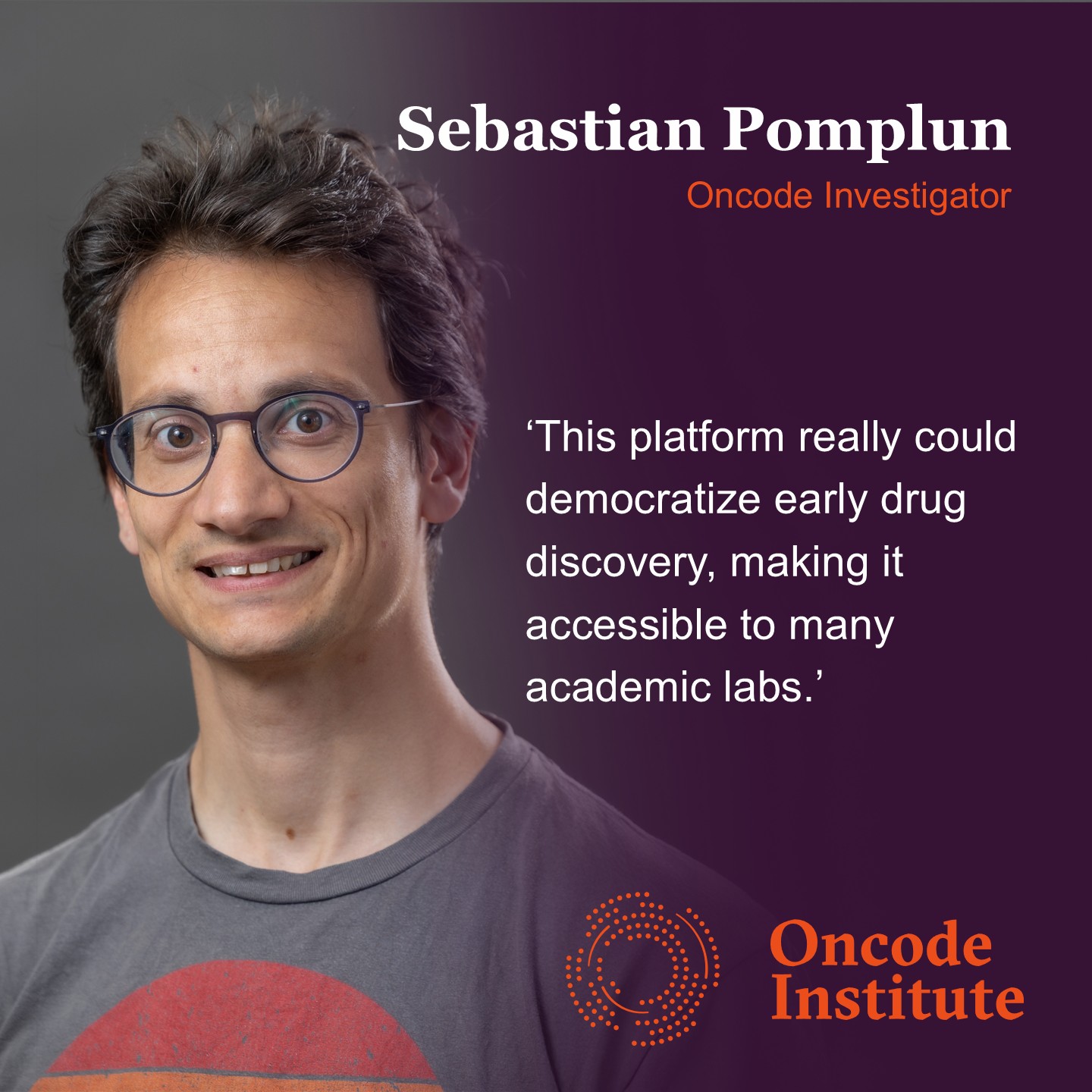Finding new medicines starts with identifying molecules that bind to disease-related proteins. This first step - hit discovery - is often slow, costly, and requiring specialized equipment. Oncode Researchers led by Oncode Investigator Sebastian Pomplun (Leiden University) and in collaboration with the lab of Oncode Investigator Sylvie Noordermeer (LUMC) have developed a powerful alternative that could make this process faster, simpler, and more accessible.
The team introduces the Self-Encoded Library (SEL) - a platform that allows scientists to screen vast collections of small molecules without the need for DNA barcodes or complex automation. Instead, SELs rely on mass spectrometry and computational decoding to identify active compounds directly. The study, published in Nature Communications, could transform how both academic and industrial researchers approach the earliest stages of drug discovery.
Rethinking How We Search for Drug Candidates
Traditionally, pharmaceutical companies use high-throughput screening (HTS) to test millions of compounds against a chosen protein target. While effective, these robotic systems are costly and often inaccessible to smaller labs. In recent years, DNA-encoded libraries (DELs) have offered a more efficient alternative: each compound carries a DNA “barcode” that identifies it after binding to a target.
Pomplun explains that while DELs have advanced the field, they also come with built-in limitations. The DNA tag is large, highly charged, and can interfere with binding - especially for proteins that naturally interact with DNA or RNA. It also restricts the types of chemistry for compound synthesis that can be used.
A Library That Identifies Itself
To overcome these barriers, Pomplun’s team developed Self-Encoded Libraries - collections of hundreds of thousands of small molecules synthesized on solid beads. Each molecule can be uniquely identified by its mass spectrometric fingerprint, rather than a DNA tag.
Using tandem mass spectrometry (MS/MS), the researchers record how each compound fragments when broken apart, generating a unique pattern that reveals its structure. A custom software tool, COMET, automatically interprets these patterns and matches them to the correct molecules, allowing the entire library to be decoded without barcodes.
This direct identification makes the approach much more flexible and reduces the need for specialized infrastructure - putting large-scale screening within reach of many more research teams.
Proof of Concept: Targeting the Untargetable
The researchers demonstrated the power of the SEL approach by screening libraries of up to 750,000 compounds against two cancer-relevant proteins: carbonic anhydrase IX (CAIX) and flap endonuclease 1 (FEN1).
CAIX, a well-known enzyme involved in tumor growth, served as a benchmark. The SEL approach successfully uncovered multiple nanomolar binders that matched known active motifs.
FEN1 provided an even more important test case. Because it naturally binds DNA, it cannot be screened using DNA-encoded libraries. The SEL platform, however, identified potent FEN1 inhibitors, showing that it can reach target classes previously off-limits to barcode-based screening.
A Simpler, More Accessible Technology
The SEL platform can be synthesized in just days using standard chemistry - no enzymes, DNA sequencing, or robotics required. According to Pomplun, this simplicity could change who gets to participate in early drug discovery.
“This platform really could democratize early drug discovery, making it accessible to many academic labs,” says Pomplun. “The technology is so much more accessible than typical high-throughput screens and much simpler than DNA-encoded library technology. We really believe that it will accelerate the discovery of valuable chemical probes and starting points for drug discovery in many areas.”

The Power of Collaboration
Pomplun emphasizes that the collaboration within the Oncode Institute network was key to realizing this breakthrough.
“The Oncode network was crucial: when you have a new technology you want to showcase it on novel, intriguing targets. The connection with fellow Oncode Investigator Sylvie Noordermeer came just at the right time. She was working on cancer-related nucleases, a target class that is not accessible to DNA-encoded libraries. We used our platform to discover interesting hit compounds for FEN1, and Sylvie had exactly the right assays to validate these new compounds.”
He adds that the collaborative culture and support within Oncode Institute helped move the project forward faster than it might have otherwise:
“Overall the support and enthusiasm of the Oncode Institute community was amazing. Obviously the funding helps, but even more the broad positive feedback from both scientists and business developers encouraging us to really get this technology going was an incredible driving force.”
Impact: Opening New Frontiers in Cancer Research
By combining high-diversity chemistry, advanced mass spectrometry, and automated data analysis, the Self-Encoded Library platform provides a new way to identify small molecules against challenging cancer targets - including enzymes and nucleases that cannot be explored with DNA-based approaches.
For Oncode Researchers, this means new opportunities to develop chemical probes and drug candidates that interfere with DNA repair, tumor metabolism, or other pathways crucial to cancer survival.
The SEL approach also lowers the barrier for discovery, allowing more groups within the Oncode community to test hypotheses and develop new therapeutic starting points.
“SELs expand what’s chemically and biologically possible,” Pomplun concludes. “They give us access to targets that have been beyond reach - and that could lead to completely new types of cancer drugs.”